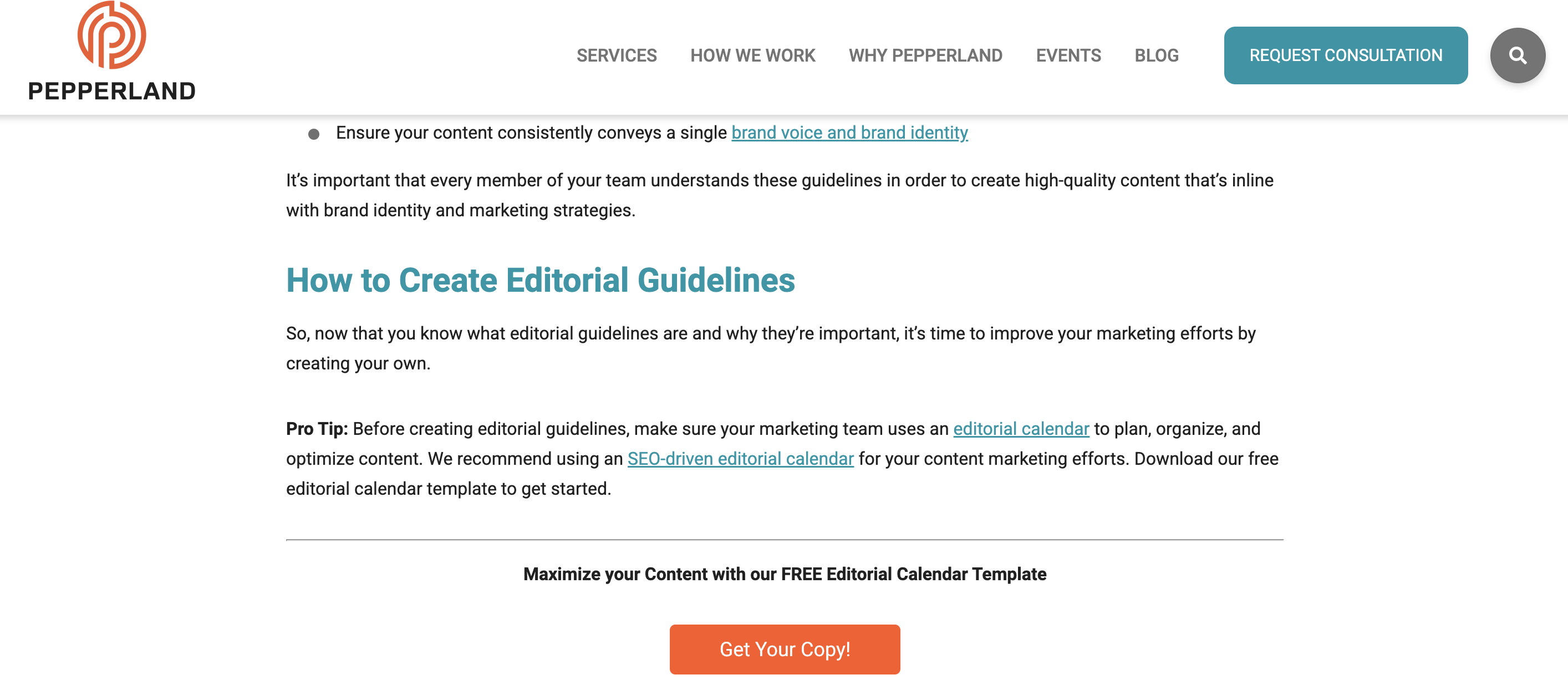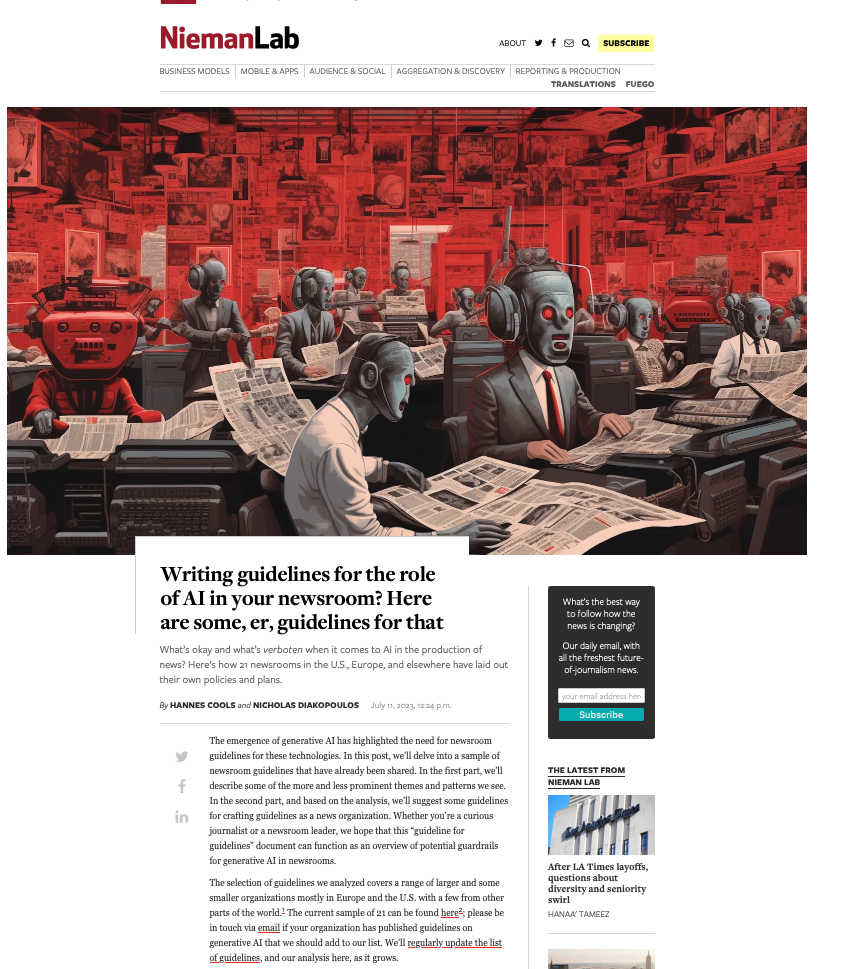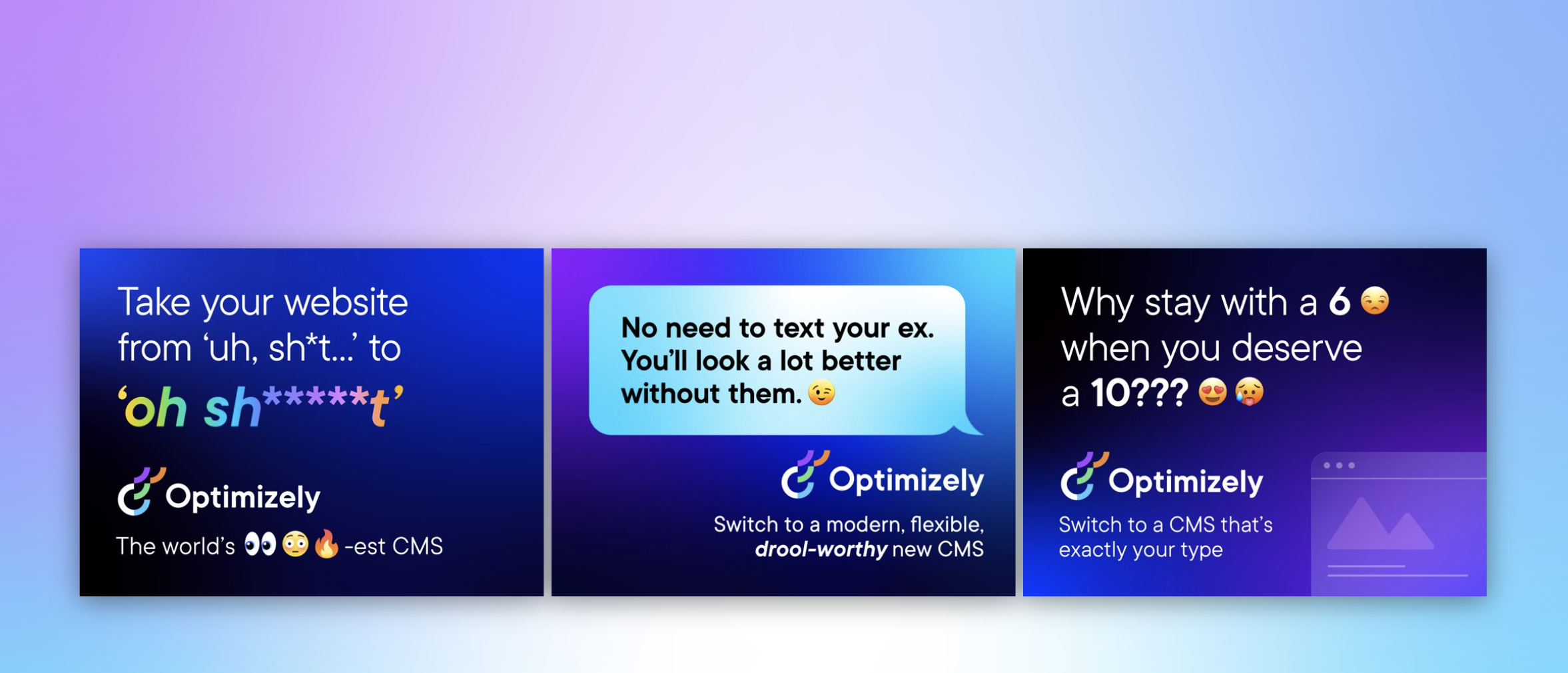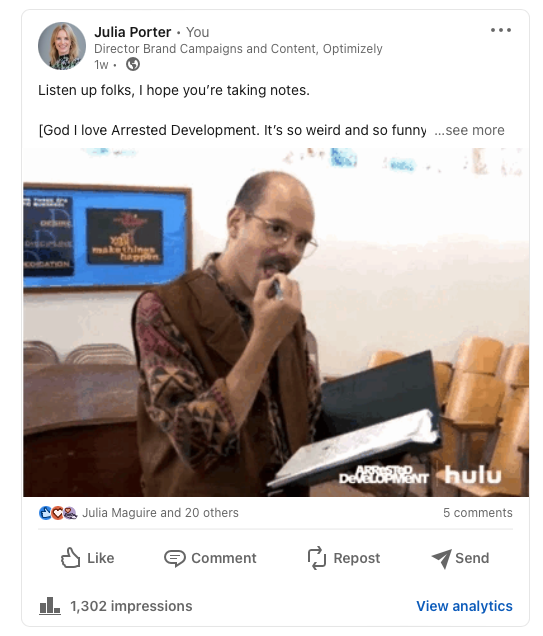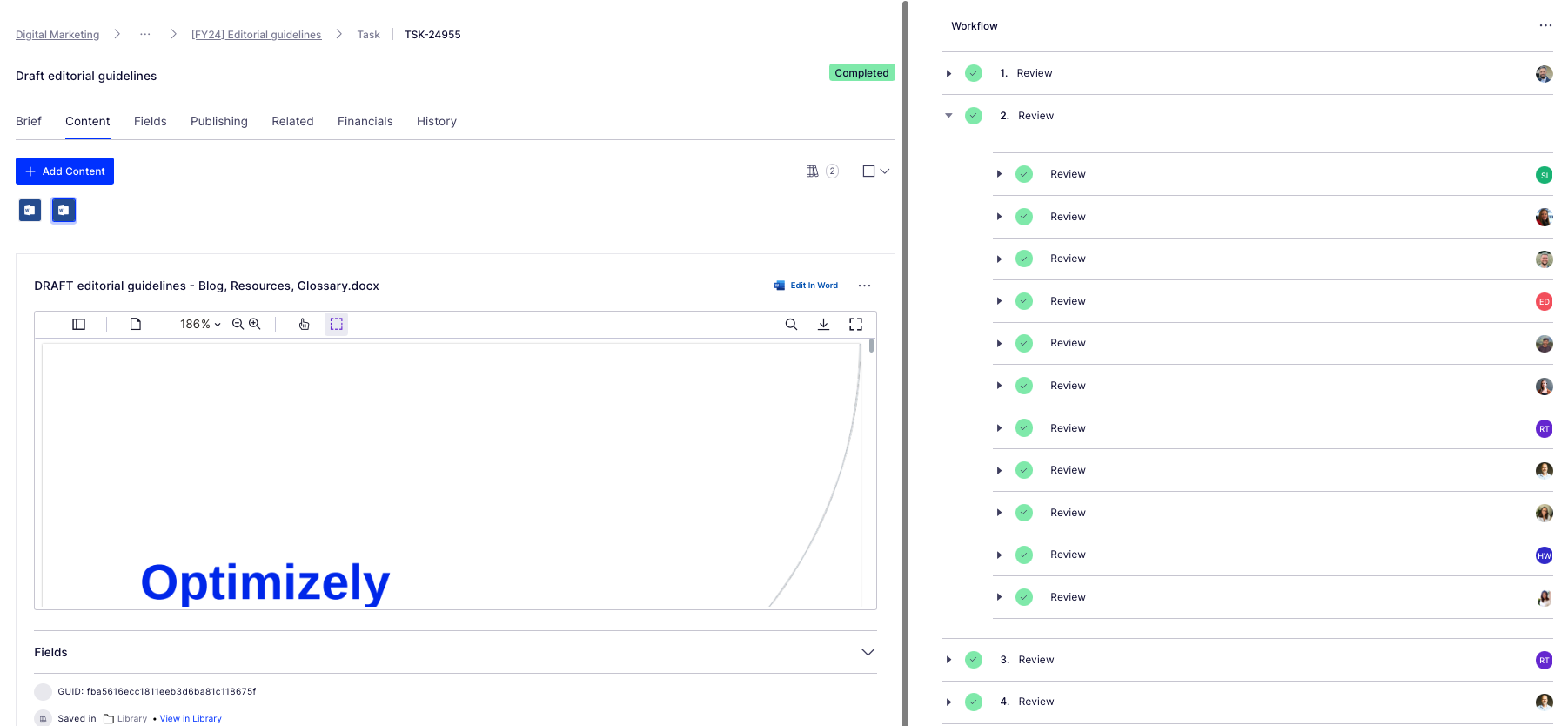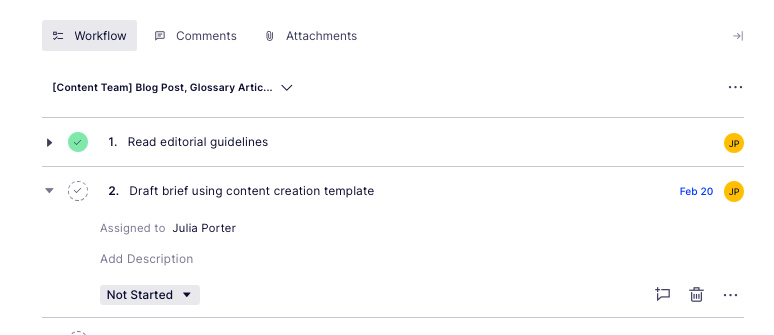Før vi dykker ned i alt som har med redaksjonelle retningslinjer å gjøre, en rask introduksjon. Jeg leder innholdsteamet her hos Optimizely. Jeg er ansvarlig for å utvikle innholdsstrategien vår og sørge for at den er i tråd med de viktigste forretningsmålene våre.
Her skal jeg ta deg med gjennom prosessen vi brukte for å lage nye redaksjonelle retningslinjer; ting som fungerte bra og takle noen av utfordringene som følger med ethvert godt prosjekt med flere interessenter, dele noen eksempler og gi deg en mal du kan bruke til å sette dine egne innholdsstandarder.
Hva er redaksjonelle retningslinjer?
Redaksjonelle retningslinjer er et sett med standarder for alle som bidrar med innhold osv. Dette omfatter ofte retningslinjer for merkevare, tone of voice, grammatikk og stil, kjerneprinsippene for innhold og hvilke typer innhold du ønsker å produsere.
Redaksjonelle retningslinjer er en kjernekomponent i enhver god innholdsstrategi og kan hjelpe markedsførere med å oppnå følgende i prosessen med å skape innhold:
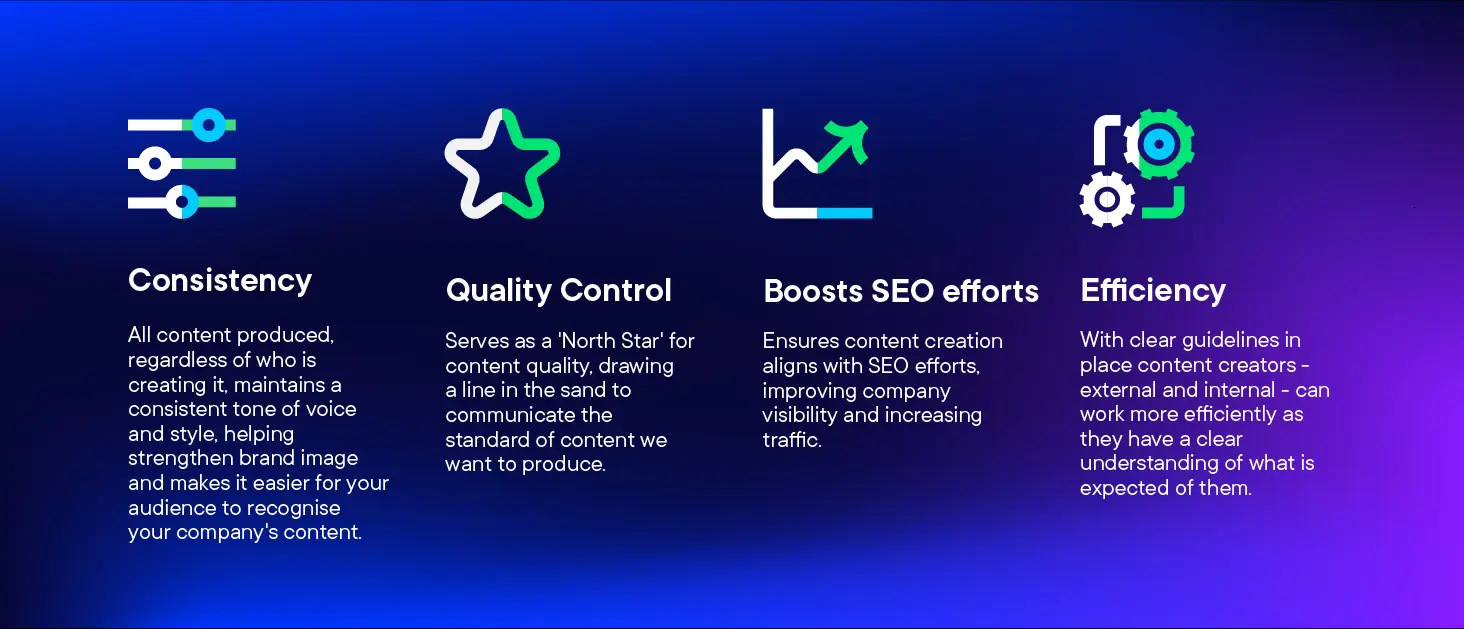
- Konsistens: Alt innhold som produseres, uavhengig av hvem som lager det, har en konsekvent tone og stil, noe som bidrar til å styrke varemerkeimaget og gjør det enklere for publikum å gjenkjenne bedriftens innhold
- Kvalitetskontroll: Fungerer som en "nordstjerne" for innholdskvaliteten, og trekker en linje i sanden for å kommunisere standarden på innholdet vi ønsker å produsere
- Styrker SEO-innsatsen: Sikrer at innholdsproduksjonen er i tråd med SEO-innsatsen, noe som forbedrer bedriftens synlighet og øker trafikken
- Effektivitet: Med klare retningslinjer på plass kan innholdsprodusenter - både eksterne og interne - jobbe mer effektivt, ettersom de har en klar forståelse av hva som forventes av dem
Eksempler på redaksjonelle retningslinjer
Det finnes noen gode eksempler på redaksjonelle retningslinjer som kan hjelpe deg med å komme i gang.
Her er noen jeg har brukt:
1. Redaksjonelle verdier og standarder, BBC
Ah, BBC. Dette hjalp meg virkelig med å kanalisere min indre journalist og lære av folkene som bygget grunnlaget for gratis kvalitetsjournalistikk.
Hvordan lage redaksjonelle retningslinjer, Pepperland Marketing
Etter å ha sett på helheten innså jeg at jeg trengte mer fokusert veiledning i hvordan man trinn for trinn utarbeider redaksjonelle retningslinjer.
Jeg likte veldig godt innholdet de flinke folkene i Pepperland Marketing har laget, inkludert en gratis mal - takk folkens! - Det inspirerte meg delvis til å lage vår egen gratis mal for å dele erfaringer og hjelpe andre med å komme raskt i gang med å lage sine egne retningslinjer.
3. Skriver du retningslinjer for AI i redaksjonen din? Nieman Lab
I tillegg til å gi veiledning om innholdskvalitet og innholdsproduksjonsprosessen, ønsket jeg å ta opp det vanskelige temaet kunstig intelligens i de redaksjonelle retningslinjene våre. Jeg ville gi innholdsskaperne en veiledning om "rettferdig" bruk av kunstig intelligens når de lager innhold, for å sikre at skaperne kan dra nytte av den fantastiske kraften i disse verktøyene, men også for å understreke at det å stole 100 % på kunstig intelligens i innholdsproduksjonen er i strid med våre kjerneprinsipper for kvalitet.
For å finne ut mer har jeg lest denne fascinerende artikkelen, der jeg har hentet veiledning fra store medier over hele verden. Jeg vet at ting endrer seg veldig raskt når det gjelder kunstig intelligens, men jeg anbefaler på det sterkeste at du leser denne artikkelen og lar deg inspirere av hvordan disse mediene håndterer dette temaet.
Hvorfor bestemte vi oss for å lage redaksjonelle retningslinjer?
1. For å tilpasse innholdsskaperne til en tydelig visjon og prosess
Optimizely har gjennomgått en enorm transformasjon i løpet av de siste tre årene, med raske oppkjøp og alle de gleder og frustrasjoner det kan føre med seg. Som innholdsteam innså vi raskt behovet for å lage et sett med tydelige og engasjerende retningslinjer som hjelper innholdsskaperne med å forstå hvordan og hvor de kan bidra, og som gir en tydelig prosess å følge når man sender inn en innholdside til vurdering.
2. Fornyet tilnærming til merkevare og innhold
Optimizely som merkevare gjennomgår også en merkevareutvikling - fra en mer formell, veloverveid tone of voice til en som er mye mer tilgjengelig, jordnær og ikke redd for å bruke humor, både i innhold og utførelse.
Se den nyeste CMS-kampanjen vår:
Den er ganske utradisjonell når det gjelder kreativitet og budskap. Det er en annonsekampanje som er designet for å fange oppmerksomhet, ja, men også for å demonstrere våre evner som markedsføringsteam til å skape denne typen kampanjer som normalt er forbeholdt andre mer kreative bransjer.
Vi ønsket å gi veiledning til andre innholdsskapere utenfor teamet om hvordan de også kan skape innhold som omfavner denne nye tone of voice, samtidig som vi sørger for at innholdet følger retningslinjene for merkevaren vår.
3. Effektivisere prosessen for innholdsproduksjon
I likhet med mange andre globale virksomheter har vi mange forskjellige innholdsskapere som jobber i ulike tidssoner og på forskjellige steder. Ved å dokumentere et sett med retningslinjer og gjøre dem lett tilgjengelige, kan innholdsskaperne raskt forstå hvilke innholdsmål vi har, hva slags innhold vi ønsker å skape og hvorfor. Det vil frigjøre tid som innholdsteamet kan bruke på å gjennomgå og redigere innsendte bidrag, og det vil sikre at innhold og optimalisering er i tråd med de overordnede innholds- og forretningsmålene.
Det var også klart at vi måtte dokumentere en prosess for innsending av innholdsideer, så vi sørget for å inkludere dette i selve retningslinjene for å gjøre det enkelt og tilgjengelig for alle bidragsytere.
4. Prioritet for tilbakeblikk på 2023
Som innholdsteam gjennomgår vi regelmessig innholdsstrategien og -prosessene våre for å sikre at vi jobber så effektivt som mulig.
I vårt siste retrospektiv. spurte jeg teamet mitt om hva jeg som leder kunne gjøre for å hjelpe dem til å få større gjennomslagskraft i rollen sin.
Redaksjonelle retningslinjer var nummer én på listen.
Så vi satte i gang...
Hva vi gjorde
- Videfinerte et avgrenset arbeidsomfang for den første versjonen av de redaksjonelle retningslinjene, med fokus på blogg- og ressursseksjonen på nettstedet. Det er her innholdsteamet tilbringer mesteparten av tiden sin, og det er derfor her de er mest involvert i prosessen med å skape innhold. Det er også her de mest utfordrende flaskehalsene har vært tidligere
- Research. Jeg undersøkte hva som fantes der ute, fikk tak i noen gratis maler og satte sammen et rammeverk for å lage en første versjon som jeg fikk innspill og tilbakemeldinger på.
- Spurteinnholdsfellesskapet - Jeg sendte ut noen spørsmål til nettverket mitt på LinkedIn om retningslinjer for innhold og innholdsstrategi, for å få innspill og veiledning fra smarte markedsførere.
Jeg kombinerte to av mine store lidenskaper i livet - innholdsstrategi og Arrested Development - i ett LinkedIn-innlegg (februar 2024)
- Inviterte til tilbakemeldinger: I løpet av noen uker inviterte vi samarbeidspartnere til å kommentere i et delt dokument for å få iterative tilbakemeldinger, få ideer til neste arbeidsomfang og ikke minst for å få folk med på reisen i arbeidet med å lage retningslinjene. Se på alle disse korrekturleserne! Ved å gjøre dette i vår Content Marketing Platform (CMP) sørget vi for at alle tilbakemeldingene ble samlet på ett sted, og at vi kunne administrere prosessen på en tydelig måte, trinn for trinn:
Se på alle disse samarbeidspartnerne! Takk skal dere ha! Og alle de flotte avkrysningene, så tilfredsstillende. Jeg er så glad for at jeg kunne beskjære ut de utestående oppgavene for dette skjermbildet også (Kilde - Optimizely CMP)
- Oppdatert arbeidsflyt for innhold: Nå som vi har klare, dokumenterte retningslinjer på plass, har vi inkludert dette som et trinn - det første trinnet - i arbeidsflyten som brukes for å opprette blogginnlegg:
Kilde: Optimizely CMP
Resultater
Det er tidlig i prosessen, men vi ser allerede et større engasjement for innholdsprosessen, spesielt blant teamene som er involvert i utarbeidelsen av retningslinjene (noe som var en del av begrunnelsen i utgangspunktet :))
Kilde: My Teams-chatten
Det har inspirert teamene til å tenke annerledes om hva slags innhold vi ønsker å produsere fremover - både til bloggen og andre steder.
Jeg vil også si at det har styrket teammoralen og samarbeidet, og hjulpet ulike team til å jobbe sammen om felles mål for å produsere arbeid av bedre kvalitet.
Hva blir det neste?
Vi er i full gang med å planlegge en bredere kommunikasjon av de redaksjonelle retningslinjene enn bare markedsføring. Vi har beholdt det opprinnelige utkastet og deler det jevnlig med eksisterende og potensielle samarbeidspartnere for å få løpende kommentarer, ideer og tilbakemeldinger.
Utarbeidelsen av retningslinjene har også satt i gang en diskusjon om hvilke typer briefs og maler vi ønsker og trenger å lage i CMP for å kunne skape ulike ressurser. Det er viktig å finne den rette balansen mellom kreativ tilnærming og bruk av maler for å skalere innholdsproduksjonen.
Vi vil gjennomgå disse retningslinjene hvert kvartal og utvikle dem etter behov, og legge til nye formater og kanaler etter hvert.
Det viktigste å ta med seg
- Redaksjonelle retningslinjer er en nyttig måte å veilede innholdsskapere på som en del av den overordnede innholdsstrategien
- Å ta seg tid til å gjøre research på forhånd kan bidra til å fremskynde tilsynelatende komplekse prosjekter. Ikke vær redd for å be om innspill og råd fra lokalsamfunnet mens du skaper innhold
- Hold omfanget lite til å begynne med, i stedet for å prøve å tilpasse alt på én gang. Test og lær underveis
- Samarbeid med interessenter om å lage retningslinjer helt fra grunnen av for å sikre at du skaper et rammeverk som er nyttig, relevant og brukt
- Sist oppdatert:25.04.2025 21:15:18
